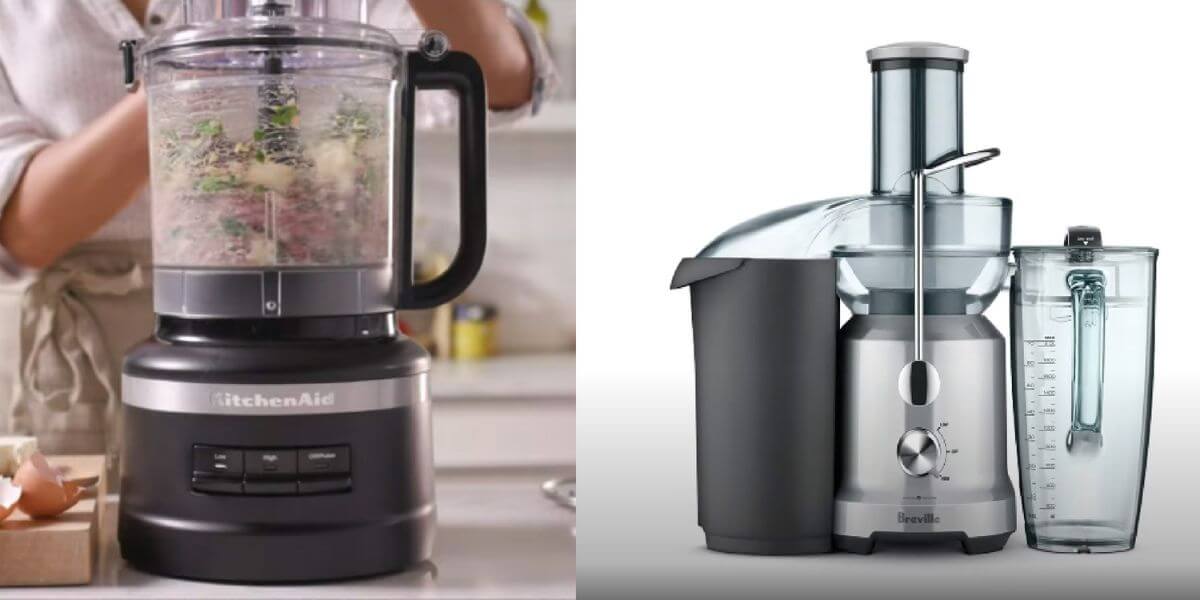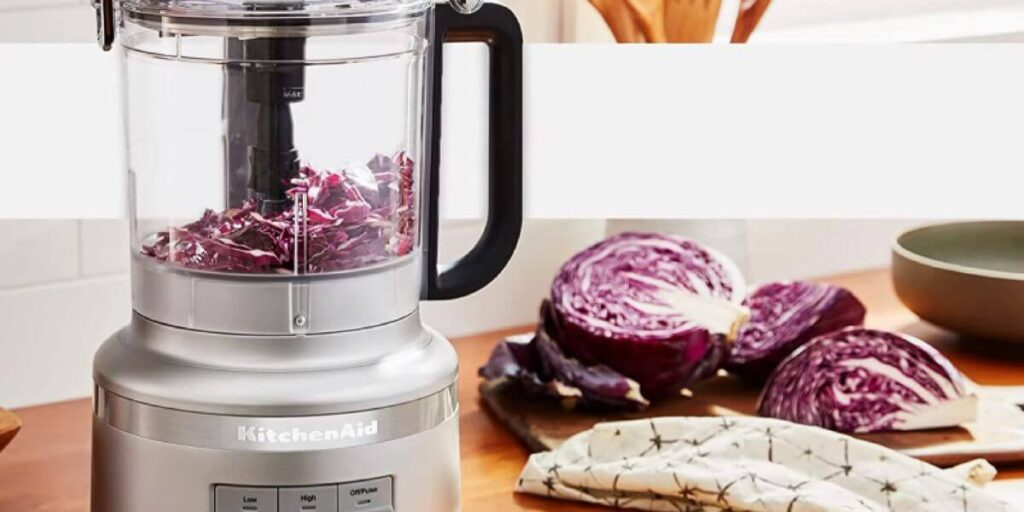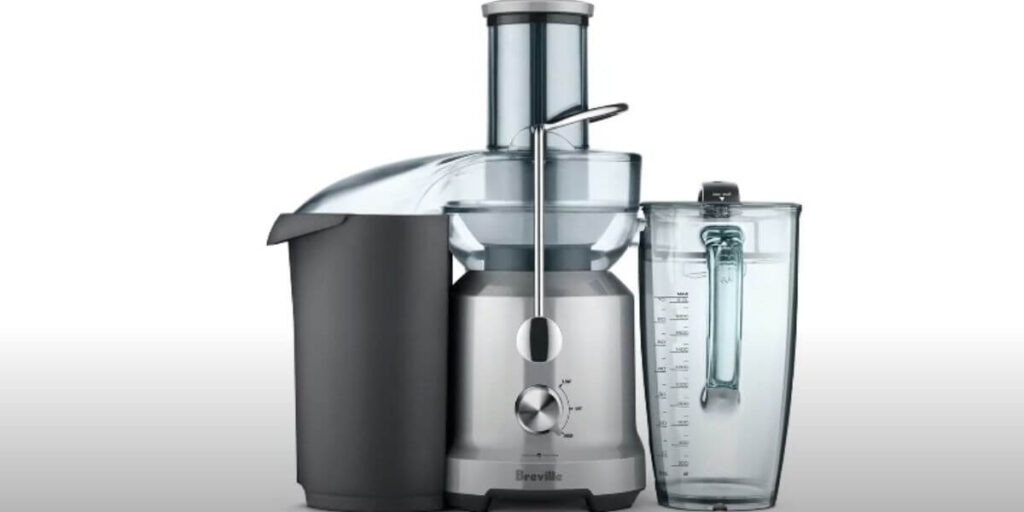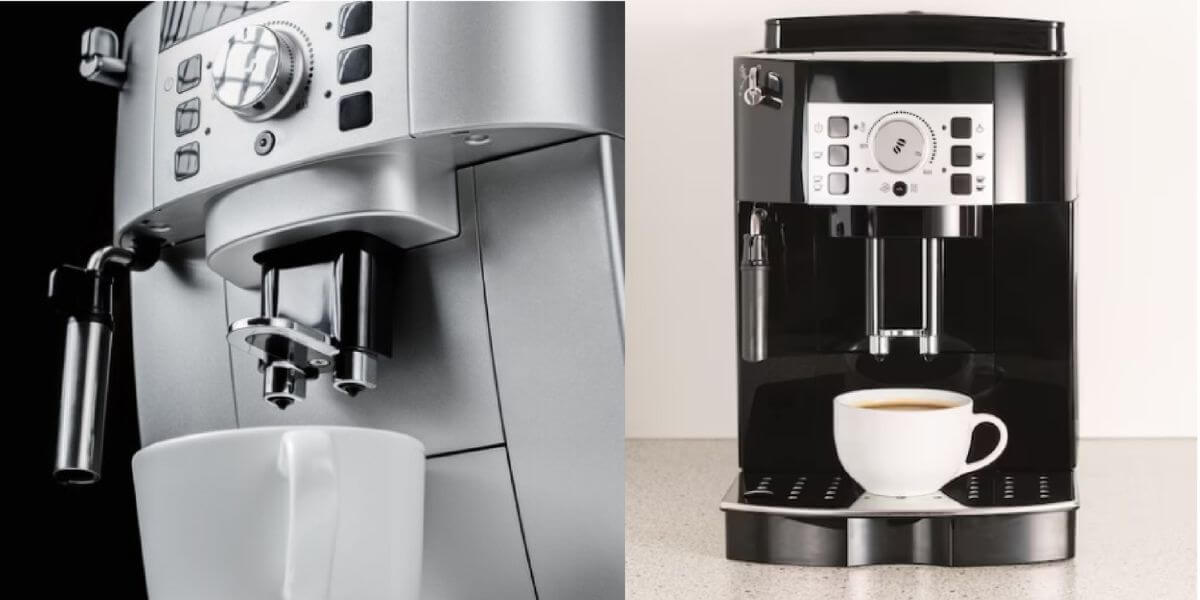Food Processor vs Juicer: Making the Best Decision For Kitchen

When transforming ingredients into delectable dishes and refreshing beverages, two kitchen workhorses stand out: the food processor and the juicer. In this comprehensive guide, we’ll explore the workings of these appliances, explore their components, and weigh the benefits and drawbacks of each. Whether you’re a culinary enthusiast or a health-conscious individual, read on to discover which kitchen companion – food processor vs juicer – deserves a spot on your countertop.
Food Processor: A Basic Overview

How Does a Food Processor Work?
Food processor is a versatile kitchen gadget designed to simplify meal preparation. At its core, it uses a powerful motor that drives various attachments, allowing it to perform multiple tasks, from slicing and dicing to pureeing and kneading.
Basic Components
The Motor
The heart of a food processor lies in its motor, which provides the necessary power to drive the blades and attachments. This motor’s strength dictates the machine’s ability to handle different foods.
The Bowl
A removable bowl, typically made of durable plastic or metal, acts as a container for ingredients during processing. The bowl’s capacity varies across different models, accommodating small and large quantities.
The Attachments
Food processors come with various accessories that serve distinct purposes. Some standard extensions include slicing discs, shredding discs, chopping blades, and dough hooks. These interchangeable tools enable you to perform different culinary tasks with ease.
Step-by-Step Guide
Preparation: Gather and prepare your ingredients as needed.
Assemble: Place the desired attachment in the processor’s bowl.
Loading: Load the ingredients into the bowl, ensuring not to overfill.
Processing: Secure the lid and select the appropriate speed setting. Activate the processor to begin the desired task.
Monitoring: Keep an eye on the process to achieve the desired consistency.
Cleanup: Disassemble the processor and wash the attachments and bowl.
Pros and Cons of a Food Processor
Pros:
Versatility: A single machine can perform multiple tasks, reducing clutter in your kitchen.
Time-Saver: Speeds food preparation by automating chopping, slicing, and more.
Texture Control: You can control the consistency of your ingredients, from chunky to fine.
Dough Preparation: Excellent for kneading bread and pizza dough.
Efficiency: Saves energy and effort, especially when dealing with large quantities.
Cons:
Limited Juicing: Cannot extract juice efficiently from fruits and vegetables.
Bulkiness: This takes up counter space due to its size and multiple attachments.
Learning Curve: Some attachments require practice to achieve desired results.
Recommended Food Processor to buy
Breville BFP800XL Sous Chef 16 Pro Food Processor
This high-performance food processor has a powerful 1200-watt motor and various attachments, allowing you to tackle multiple food preparation tasks efficiently. It offers precision slicing, dicing, and chopping and a mini processing bowl for smaller jobs. The various speed options and large feeding chute make it a versatile and efficient choice.
PROS
CONS
Cuisinart DFP-14BCNY 14-Cup Food Processor
The Cuisinart DFP-14BCNY offers a generous 14-cup capacity and a stainless steel slicing disc, ensuring consistent results. It has a sturdy construction and a wide-mouth feeding tube to process more significant ingredients. Its simple controls and reliable performance make it an excellent option for everyday cooking.
PROS
CONS
Hamilton Beach 70730 10-Cup Food Processor:
If you’re looking for an affordable yet capable option, the Hamilton Beach 70730 is worth considering. With a 10-cup capacity and powerful motor, it can effectively handle chopping, pureeing, and mixing tasks. Its compact design makes it suitable for kitchens with limited space.
PROS
CONS
Juicer: A Basic Overview

How Does a Juicer Work?
As the name suggests, a juicer is designed to extract juices from fruits and vegetables. It separates the liquid from the pulp, leaving you with a nutrient-rich beverage.
Basic Components of a Juicer
The Motor and Blades
Like a food processor, a juicer contains a motor that powers the blades for crushing and squeezing the ingredients.
The Juicing Mechanism
The juicing mechanism varies depending on the type of juicer. It may involve centrifugal force, cold pressing, or twin-gear technology.
Types of Juicers
Citrus Juicers
Ideal for extracting juice from citrus fruits like oranges, lemons, and limes. They are simple to use and require manual effort.
Centrifugal Juicers
These high-speed juicers use centrifugal force to separate the juice from the pulp. They are efficient but may generate heat that affects the nutritional value.
Cold Press Juicers
Also known as masticating juicers, they use a slow and gentle process to extract juice without compromising nutrients. Perfect for leafy greens and soft fruits.
Twin Gear Juicers
These advanced juicers use twin gears to crush and extract juice, preserving nutrients and yielding a high-quality product.
Step-by-Step Guide
Preparation: Wash and prepare your fruits and vegetables.
Assemble: Set up the juicer according to the manufacturer’s instructions.
Feeding: Feed the ingredients through the chute, using a pusher if required.
Juicing: The juicer’s mechanism extracts the juice, and the pulp is collected separately.
Collection: Collect the juice in a container and the pulp in another receptacle.
Cleanup: Disassemble the juicer components for cleaning.
Pros and Cons of Juicers
Pros:
Nutrient-Rich Juice: Extracts vitamins, minerals, and enzymes from fruits and vegetables.
Variety: Different types of juicers cater to various produce types.
Health Benefits: It provides a convenient way to consume a wide range of nutrients.
Easy Digestion: Juices require less effort for digestion compared to whole fruits.
Refreshing Beverages: Perfect for enjoying fresh and flavorful drinks.
Cons:
Pulp Waste: Produces pulp that might go unused, leading to some waste.
Specialized Function: Primarily designed for juicing, limited versatility.
Cleaning Time: Juicers can have more components to clean than food processors.
Recommended juicer to buy
Breville JE98XL Juice Fountain Plus Centrifugal Juicer
This centrifugal juicer from Breville offers a powerful 850-watt motor that quickly extracts juice from fruits and vegetables. It features a wide feeding chute, allowing you to juice whole ingredients without much pre-cutting. Its dual-speed control and easy assembly make it a convenient choice for those looking for a fast and efficient juicing experience.
PROS
CONS
Omega J8006HDS Nutrition Center Cold Press Juicer
Omega J8006HDS is a masticating juicer that operates slower, preserving more nutrients and minimizing oxidation. It’s versatile and can also function as a food processor and homogenizer. Its quiet operation and ability to handle leafy greens and wheatgrass make it an excellent choice for health-conscious individuals.
PROS
CONS
Tribest GSE-5050 Greenstar Elite Cold Press Juicer
The Tribest GSE-5050 is a twin-gear masticating juicer known for efficient juice extraction and nutrient retention. It designs to handle a wide range of produce, including hard vegetables and fruits, making it a versatile addition to your kitchen. It also comes with various accessories for making nut butter and pasta.
PROS
CONS
Food Processor vs Juicer
Food processors and juicers offer unique benefits but cater to different kitchen needs. When deciding between the two, consider your cooking style, dietary preferences, and the tasks you frequently perform in your kitchen.
Food Processor: An all-in-one tool for chopping, slicing, grating, kneading, and more. Ideal for preparing a variety of dishes efficiently.
Juicer: Specifically designed for extracting nutrient-packed juices from fruits and vegetables. Great for those who prioritize fresh and healthy beverages.
Conclusion
In the culinary arena, the food processor and juicer are invaluable assets that simplify meal preparation and promote a healthier lifestyle. Choosing between them boils down to your individual preferences and culinary requirements. With the right kitchen companion, you’ll be well-equipped to embark on your culinary adventures confidently and creatively.
Frequently Asked Questions
Can I use a food processor as a juicer?
While a food processor can help you achieve a pulpy consistency, it’s not designed for efficient juice extraction.
Are juicers hard to clean?
Some juicers have multiple parts that require careful cleaning, but many models come with cleaning tools to simplify the process.
Can I make nut butter using a juicer?
No, juicers are not designed to handle the thick consistency of nut butter. A food processor is more suitable for this task.
Which is better for making smoothies?
A food processor can handle making smoothies with thicker consistencies, while a juicer is more suitable for producing liquid-based drinks.
Do juicers remove all the fiber from fruits and vegetables?
Yes, juicers extract the liquid portion of the produce, separating it from the fiber-rich pulp.


